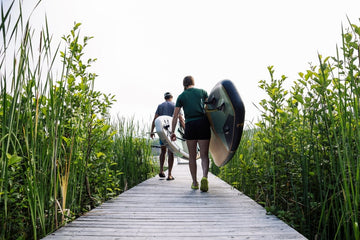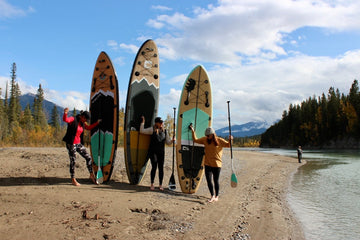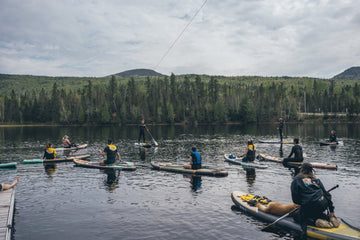When it comes to paddle boarding, the number of fins you use can significantly impact your experience on the water. Whether you're cruising leisurely or seeking speed and performance, selecting the ideal fin setup is key to maximizing your enjoyment. Let's dive into the world of paddle board fins and discover which configuration suits your needs best.
Understanding Paddle Board Fins
First things first, what exactly are paddle board fins for? Simply put, they're your steering mechanism. By disrupting water flow, fins enable you to maneuver your board with precision and control. Whether you're navigating tranquil lakes or riding ocean waves, the right fin setup can make all the difference in your paddling experience.

Single Fin Setup
Stability: Boards with a single large fin offer excellent stability, making them ideal for beginners or those who prioritize cruising and yoga.
Tracking: The single fin design promotes straight-line paddling, making it easier to maintain course, especially in calm waters.
Maneuverability: While not as agile as multi-fin setups, single fins can still maneuver effectively, though they may require more effort to turn.
Thruster Setup (Three Fins)
Versatility: The thruster setup, consisting of three fins—two smaller side fins and one larger center fin—offers a balance of stability and maneuverability.
Control: The side fins provide additional grip and control, making this setup well-suited for various water conditions, including surfing and touring.
Agility: Thruster setups excel in making quick, responsive turns, allowing for greater agility and maneuverability compared to single fins.
Quad Setup (Four Fins)
Speed and Fluidity: Quad setups feature four smaller fins—two on each side of the board—positioned closer to the rails. This configuration enhances speed and fluidity, particularly in waves.
Loose Feel: The lack of a center fin allows for a looser feel, enabling tighter turns and increased maneuverability, making quad setups popular among surfers seeking high-performance boards.
Enhanced Control: While sacrificing some straight-line tracking compared to single or thruster setups, quad fins offer superior control and responsiveness in dynamic water conditions.
Five-Fin Setup (Five Fins)
Adaptability: Five-fin setups, also known as "5-fin boxes," provide the ultimate versatility by offering multiple fin configurations in one board. This allows paddlers to experiment with various setups, such as single, thruster, or quad, to suit different riding styles and conditions.
Customization: Paddlers can fine-tune their board's performance by adjusting the number and positioning of fins according to their preferences and the demands of the environment.
Optimized Performance: With the ability to tailor their fin setup on the fly, paddlers can optimize their board's performance for speed, stability, maneuverability, or a combination thereof, making five-fin setups a favorite among experienced riders seeking maximum customization.
In conclusion, the choice of fin setup for your paddle board is not a one-size-fits-all decision. Each configuration offers its own advantages, whether it's the stability of a single fin, the versatility of a thruster setup, the agility of a quad setup, or the adaptability of a five-fin setup. By understanding how different fin setups affect stability, tracking, maneuverability, and overall paddling performance, you can make an informed decision that enhances your enjoyment on the water.
So, whether you're cruising calm lakes or carving through ocean waves, choose the fin setup that best aligns with your paddling goals and preferences, and embark on your next adventure with confidence.



